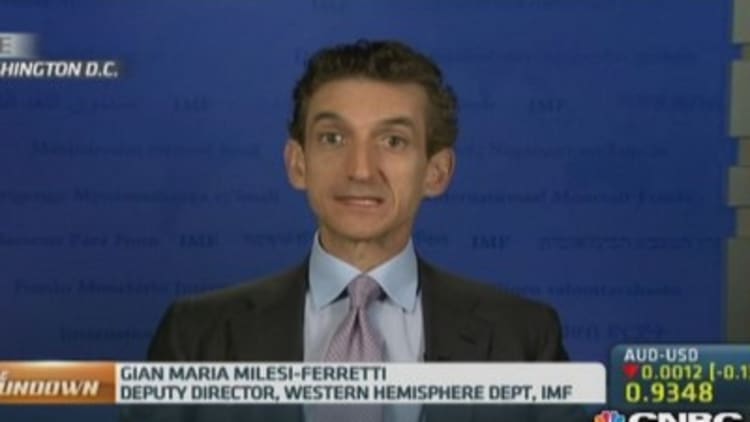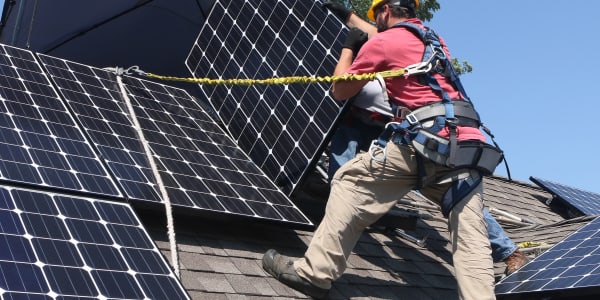If you're drowning in unread paperwork, such as checking account statements and 401(k) updates, consider that roughly a quarter of all Americans are unbanked or underbanked. Rising costs and penalties for holding small sums of money in formal accounts keep many off the financial grid. They're instead using prepaid cards and check-cashing services, which also can mean fees and create a vicious cycle, with little hope of savings or prosperity.
But reaching those on the financial fringe isn't just a developed-world problem. In emerging economies, including those in Africa and Asia, reaching the un- and underbanked remains a challenge for governments and policymakers. Access to the mainstream financial marketplace can help encourage savings, public safety, disaster preparedness and asset building for underserved groups, according to a 2012 bulletin from the Federal Reserve System's Board of Governors on the underbanked.
Now several mobile technology trends quickly are colliding and maturing. The end result could be more affordable financial services for more people around the world—including those in the U.S.
Read More Wal-Mart launching money-transfer service
A key trend is plunging prices for prepaid phones (smartphones still are rare in the developing world). Indian phones, for example, are available for $50—with pricier and cheaper versions for sale, depending on the model. Unlike the U.S., where hefty contracts and monthly payments are the norm, roughly 90 percent of phones purchased in developing economies are prepaid versions.
Mobile service is becoming nearly ubiquitous globally. So even if you're a farmer in the middle of rural Tanzania or India, for example, a phone can be an affordable gateway onto the financial grid.
As cheaper phones proliferate, so, too, is the data on mobile phone usage and those users. Low-income people and those under the financial radar traditionally have what's known as thin files. This group lacks paperwork and other transaction records, which normally are precursors to credit scores and loans.
Then, in 2008, the terrorist attacks in Mumbai, India, created a data ripple effect. After the attacks, individuals in many countries were required to register SIM cards—basically, the chips inside phones. The registration change linked individuals to phone numbers. Unlike America, where we can't seem to register and document enough, the SIM card registration created a data treasure trove of millions of people—the un- and underbanked with phones—who previously were off the information grid.
The lightbulb went off for savvy start-ups.
Upstarts see potential profit in helping deliver financial services to underserved populations—using mobile data and platforms. The start-ups are focusing on people with thin files and using new metrics for creditworthiness—such as time spent on smartphones and number of calls made. The point is to crunch available mobile data to assess individuals' engagement in communities and ultimately their ability to repay loans.
"If you put all of this together, what this is leading to is change in mobile financial services," said Ranu Dayal, senior partner at The Boston Consulting Group in New Delhi.
It's about opening economic development to new populations. "It's a massive pool of people who've never been on the information grid," said Nicole Stubbs, chief executive of First Access, based in New York City. The 3-year-old start-up combines financial and mobile data to gauge the credit risk of potential customers for lending institutions.
Read MoreHow Twitter wants to change the world and make money
Mobile start-ups
Of course, there are concerns about data privacy amid more mobile phone records.
But experts say financial services' shift to mobile platforms is only accelerating. And those businesses that can navigate privacy issues thoughtfully and efficiently may enjoy a first-mover advantage.
First Access is running in Tanzania and hopes to operate in other parts of Africa, Asia and Latin America. Here's how their technology works:
A loan officer types in an applicant's phone number into a phone. First Access software sends a text in the local language to the loan applicant's phone number.
Once the customer agrees to participate in the evaluation, First Access then buys real-time user data from mobile carriers, including frequency of interactions and expense patterns. That data is used to assess individuals' likelihood to repay loans by benchmarking them against past borrowers.
First Access earns a margin on selling that acquired mobile data to requesting financial institutions, such as local banks and microfinance institutions, which ultimately lend money to applicants. The entire process takes minutes in real time.
Another competitor in this mobile space is 3-year-old start-up Cignifi, based in Cambridge, Mass. They're also using mobile phone usage and data records to assess consumers' lifestyles and ability to repay loans in Africa and Latin America. Cignifi charges its customers, including local banks and insurance companies, a service fee for turning raw mobile phone data into usable credit analysis.
"We take that raw data and repurpose it and create scores," said Jonathan Hakim, chief executive of Cignifi. "We're unlocking financial services for huge numbers of underserved people around the world," he said.
The future

As this space of mobile start-ups and financial services evolves, some forecast a future in which lenders and customers—including individuals and businesses—will be able to interact quickly and affordably via mobile phones, with the old-fashioned notion of cash trading hands eliminated.
Some microfinance players also are working to provide loans that are three to five times the current microcredit amount—usually $100 or less, said Dayal of The Boston Consulting Group. Such small loans are used for working capital, such as agriculture equipment for a farmer or fabric and a sewing machine for a seamstress.
Over time, costs associated with mobile finance may drop significantly enough to ricochet and become working models in developed countries like the U.S., where about 11 percent of consumers are unbanked and another 11 percent are underbanked, according to the Federal Reserve bulletin. Globally, these underserved groups haven't grown significantly in recent years—but they haven't declined, either, Dayal noted.
"We're talking about creating a low-cost structure for serving the bottom of the pyramid," Dayal said. "You can almost have a class of access and types of accounts that allow people with low balances to maintain an existence in the organized financial system."
Added Stubbs of First Access, "It's a huge breakthrough for inclusive economic development."
—By CNBC's Heesun Wee. Follow her on Twitter @heesunwee, and Facebook.





